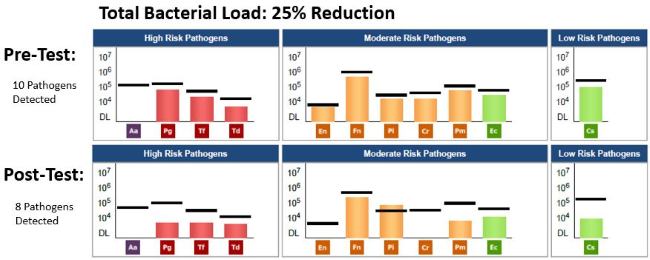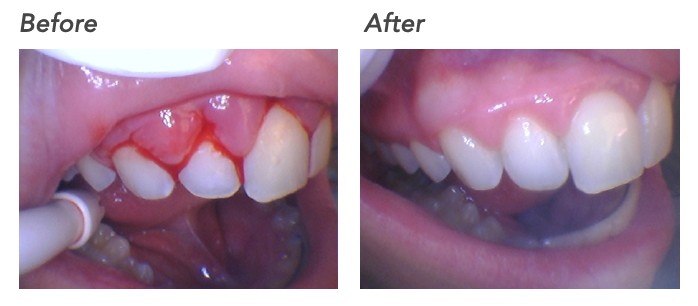Class II Periodontitis and Mouth Breathing
By: Annie-Laurie Harris, BSDH, RDHMP
December 23, 2019
The Challenge:
To establish health through periodontal intervention per JP Institute protocols.
The Background:
- Age: 25
- Sex: Female
- Medical History: Adderall controlled ADHD with panic disorder
- Family History: Father: early Cardiovascular Disease; Maternal Grandmother: periodontal disease and high decay rate; Maternal Grandfather: died in his 60's of fatal myocardial infarction, history of transient ischemic attack, oral cancer and lung cancer
- Last Dental Exam: 3/02/2016
- Chief Complaint: Gums hurt and bleed, bad breath, mouth breathing
- Clinical Assessment: Referral to periodontist 3/2/2016. Diagnosed with Localized Aggressive Periodontitis. Recommended Treatment: Surgery with fair prognosis. Patient scheduled for surgery but canceled the appointment. Recommended third molars extracted, but never scheduled.
- Periodontal Assessment: Generalized 4-5mm pockets with bleeding, localized 6-9mm pockets, radiographic bone loss.
The Solution:
- Date of Pre MyPerioPath® (pre-therapy test): 4/20/2017
- Periodontal Therapy: 6-8 one hour Periodontal Therapy Visits, Micro-ultrasonic technology, Oral Irrigation, Extraction of partially erupted 3rd molars.
- Systemic Antibiotic Use: Metronidazole 500mg bid for 8-10 days
- Home Care Instruction: Sonicare Toothbrush & Sonicare Airflosser, StellaLife® rinse and gel, LifePak® Nano
- Date of MyPerioProgress® (post-therapy test): 8/30/2017
Additional Comments: The post therapy test was ordered as an Alert 2™. Nutritional Counseling was also administered.
The Result:
By incorporating OralDNA salivary tests, the pre-test MyPerioPath, and integrating The JP Institute methods of communication, my patient was able to own her disease. The pre MyPerioPath confirms a bacterial cause and the post MyPerioProgress gives an objective measurement of bacteria reduction. The MyPerioID® portion of the Alert 2 being G/G, or High risk, helps to establish the need for more comprehensive non-surgical therapy and frequent re-care as well as forewarns the patient of possible relapse.
I was confident the periodontal therapy was going to result in a healthy tissue response, which is apparent from the below photo. The patient and I were pleasantly surprised with the overall health benefits including improved energy, better breathing- as her sinuses cleared resulting in secession of mouth breathing, and her mood stabilized resulting in discontinuation of Adderall.


About the Author:

Annie-Laurie Harris BSDH, RDHMP has been in clinical practice for 22 years. Her career began in a progressive periodontal specialty practice where she developed a fascination for the treatment and maintenance of periodontal disease. She was introduced to a philosophy and technique that was innovative and successful in treating periodontal disease. She received intensive training from the JP Institute in Evolutionary Hygiene in 2004. In 2008 she completed JP Institute's Mastership program. She is also currently pursuing a Master's Degree in Dental Hygiene Research at Old Dominion University.
She became a founding member of the American Academy of Oral Systemic Health. This discovery ignited an enthusiasm for the science and treatment of biofilm. Her colleagues and patients have given her the affectionate nick-name 'Dental Geek'. She has been known to attach a head cam to demonstrate (to her willing patients) live video of the biofilm disruption process. Annie is thrilled to be mentoring and training to her fellow colleagues and considers herself a JP Institute Evangelist.